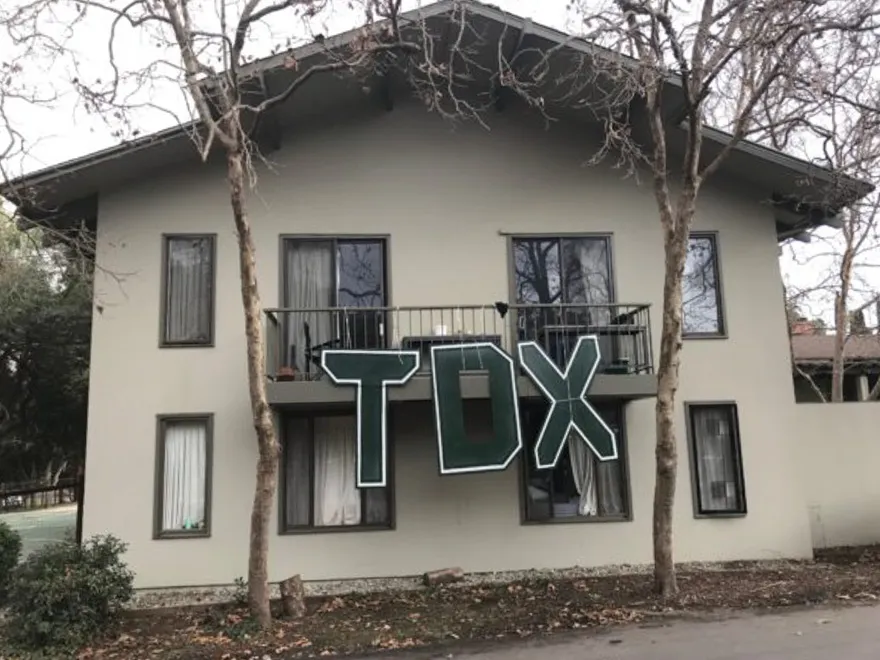Table of Contents
On the morning of January 17, 2020, Stanford sophomore Eitan Weiner was pronounced dead by the Palo Alto Fire Department at the Theta Delta Chi (TDX) fraternity house. The next month, the Santa Clara County Medical Examiner-Coroner's Office determined the cause of death was an accidental overdose of fentanyl, an incredibly dangerous opioid.
Stanford has never publicly stated how Weiner came to acquire drugs containing fentanyl, but a Stanford email approximately two weeks after his death warned students about the danger posed by counterfeit Percocet pills laced with fentanyl.
In the year following Weiner's death, Stanford and the Organization Conduct Board (OCB) conducted an investigation that concluded early in October 2020. Early this year, the OCB reported its findings to Dean Mona Hicks; on March 22, 2021, she issued a public statement detailing the violations and the sanctions she took against TDX.
Dean Hicks reported that the OCB found TDX responsible for all three violations investigated:
- Possession of marijuana, found in the room of the deceased student
- Possession of opioid (a bottle of Percocet), also found in the room
- Failure on the part of TDX to report the possession of opioid
Dean Hicks wrote that, as a result of these findings, TDX would lose its university recognition and all privileges afforded by that recognition for a period of six years.
“This is a serious sanction for a serious matter. A resident of the TDX house, a much-loved member of our community, tragically lost his life last winter.To be clear, the OCB investigation was not about assigning fault or responsibility for the student’s death. However, the investigation found serious lapses in policy compliance by the fraternity that we simply cannot have in our community, for the safety of everyone.
Within the next 30 days, TDX may petition the Dean of Students’ determination to the Vice Provost for Student Affairs (VPSA), for reconsideration of the sanctions. However, TDX may not contest the findings of the violations.”
The Stanford Review has learned that TDX has filed an appeal of the sanctions. Today, we are reporting previously unreported allegations that question the university's public narrative around Weiner’s death. The Review obtained these allegations from a document circulated among thousands of TDX alumni, summarizing the appeal filed with Vice Provost Brubaker-Cole. The summary is not an official correspondence with Stanford, but purports to reflect the appeal and the facts asserted therein.
Stanford's public timeline of the death begins on Friday January 17 the day Weiner was found unresponsive in TDX and pronounced dead. But the summary sent to TDX alumni reveals an alleged first, non-lethal fentanyl overdose on the 15th, approximately 36 hours before Weiner was found dead of a second overdose on the 17th. Stanford has never disclosed this event, but based on the summary, it has been aware of it since it happened on January 15.
To be clear, the Stanford Review is not able to independently verify the facts asserted in the summary. The organization that needs to confirm those facts -- or refute them -- is Stanford, which conducted the investigation. Dean Hicks and Vice Provost Brubaker-Cole should provide as much transparency as they can.
The Review reached out on Wednesday to Stanford for comment on the facts alleged. If and when Stanford responds, we will update the story to reflect that.
What follows is a timeline of facts as gathered from the summary:
January 15, 2020:
The deceased student, Weiner, received a package addressed to him, purportedly containing a bottle of Percocet.
Some time after 5:00 p.m, a non-TDX student in the house reported to Weiner's TDX suitemates that Weiner had lost both speech and motor functions, both symptoms of a fentanyl overdose. The Stanford-employed student Resident Assistant (RA) in the house was alerted and instructed others to leave the suite. Then, the Stanford Residence Dean (RD) assigned to the TDX house was contacted by phone and made aware of the situation; the RD instructed the RA to dial 9-1-1. However, the assigned RD did not take any immediate actions and suggested that the RA contact the "on call" Residence Dean.
EMTs from the Palo Alto Fire Department arrived shortly at the house. Students informed them of the symptoms and that they suspected a drug overdose. The summary document obtained by the Review alleges that the EMTs reported seeing a bottle of pills on the scene on the 15th, but we have not reviewed Palo Alto EMT records to corroborate that claim. We are preparing efforts to obtain them through public information requests, and have also requested that Stanford provide them to us.
Some time later, Weiner was responsive and spoke with his mother, a Stanford administrator. He declined to be taken by EMTs to the Emergency Room, and did not go.
Before 6:00 p.m. the RA contacted the on-call Residence Dean and notified them of the apparent overdose, as well as the symptoms. That RD did not visit the house and it appears that no significant intervention was made. The summary document provided to the Review alleges that the RD entered the incident into a reporting log as a "non-priority."
If this assertion is true, it is incredibly alarming, and the Review is calling on Stanford to immediately clarify what precise actions the two RDs took on the 15th when they learned of the suspected overdose from the RA. We also call on Stanford to release any documentation made by the RDs, or any other Stanford employees, of the incident of the 15th.
January 16, 2020:
The RA in the TDX house told the OCB investigation that at around 11:00 p.m. on January 16th, he noticed the unisex bathroom door in the house was locked.
January 17, 2020:
The body was found between 10:00 a.m. and 12:00 p.m. when Stanford cleaning staff used a master key to unlock the bathroom door. The precise time of death is not known.
Dean Hicks claimed that "the investigation found serious lapses in policy compliance by the fraternity that we simply cannot have in our community, for the safety of everyone." But the facts alleged in the summary document suggest that it may in fact be Stanford, not TDX, that allowed "serious lapses in policy compliance."
Students deserve to know the truth about what happened, what specific actions Stanford did and did not take between 5:00 p.m January 15th and the morning of January 17th, and what Stanford has done since to ensure that a tragic incident like this never happens again.
The Review will continue to report on this as we learn more, and we will detail more about alleged due-process violations against TDX, including the allegation, asserted in the appeal, that Dean Hicks's sanction -- a six-year separation -- deviated significantly from the recommendation made by the OCB panel.
We have learned that multiple alumni have sent the summary and related documents to Stanford leaders, including President Tessier-Lavigne, Provost Drell, and multiple Trustees.
Dean Hicks's insinuation that "lapses" by TDX may have contributed to the death of a student demands a full explanation, especially in light of the facts that it appears Stanford has withheld.









